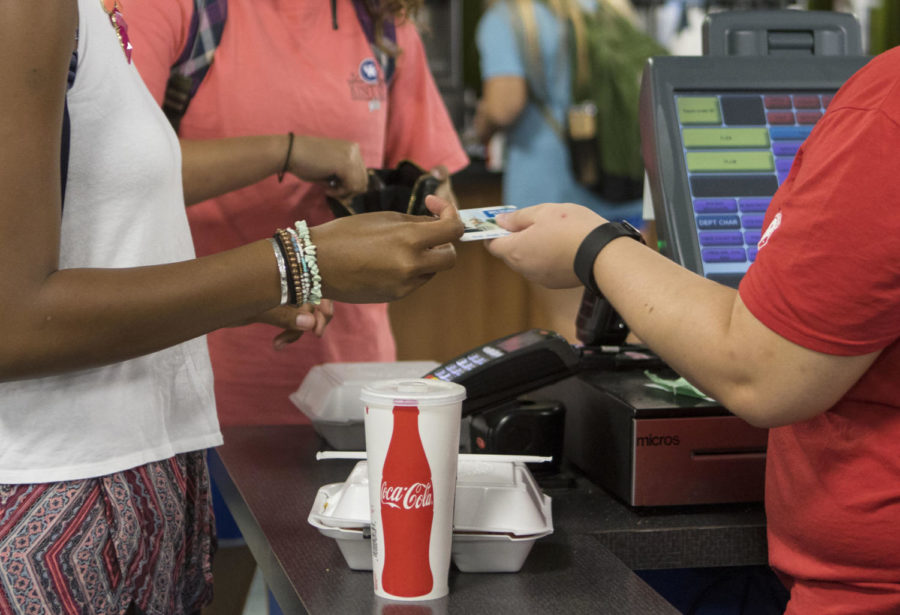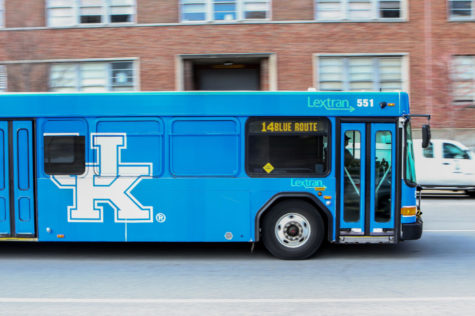On campus food only slightly more expensive than off at several key restaurants
March 30, 2017
If UK students want a chicken sandwich, they can pinch pennies by driving off campus to buy one. But for a cup of coffee, a walk to Willy T. is just as cost effective.
Those who see eating on campus as overly expensive might be surprised: on average, eating on campus costs only six cents more than eating off campus, based on the cost of items sampled by the Kernel.
On campus franchises offer similar menus to their off campus counterparts, though the campus locations sometimes have a condensed menu.
The Kernel compared prices of items at the Chick-fil-A, Starbucks and Panda Express in Bowman’s Den to their counterparts on Nicholasville Road, as well as the Subway in Bowman’s Den to the location on Woodland Avenue and the Steak ‘n Shake on north campus to the Alysheba Road location.
Chick-fil-A’s items were more expensive on campus. For example, a Chick-fil-A sandwich meal, one of the most popular meals the restaurant serves, is 26 cents more expensive on campus. The market salad, which is the only of Chick-fil-A’s three salads served at the campus location, is 50 cents more expensive.
In contrast, Starbucks and Panda Express items were generally priced the same both on and off campus, with some items even less expensive if purchased in Bowman’s Den. For example, a Starbucks white chocolate mocha is $3.95 on campus and on Nicholasville Road. Students eating Panda Express on campus can save 10 cents on a plate or bigger plate.
At Subway, the steak and cheese six-inch sub is 25 cents more expensive on campus, but the turkey breast six-inch sub is 25 cents cheaper on campus. Students pay $2.99 for a Steak ‘n Shake milkshake whether on or off campus.
“Pricing for UK Dining franchises is determined by licensing agreements that are typically negotiated on a national level, and then pricing is cascaded to on-campus dining locations based on market rates in each region,” UK Dining Marketing Manager Megan Mullinix said.
Agriculture education sophomore Taylor Masters said she thought on campus franchise items were generally more expensive than off campus items, but the Panda Express bowl she was eating was actually priced the same.
“I would say they are a little bit more expensive, but not by a lot, and I think it’s a lot because of supply and demand,” Masters said.
Assume the average student purchases one Chick-fil-A chicken sandwich meal, one tall vanilla bean frappuccino and one Panda Express plate during each of the 32 weeks that classes are in session in an academic year. On campus, a student would pay $537.60 total. If a student ate at the off-campus locations, the total price would be $532.48 before tax. Because some on campus prices are higher while some are lower, the differences in prices would nearly cancel out.
The on campus Chick-fil-A “has an entirely different operating structure than a traditional franchise,” Mullinix said. Franchises that operate on campuses are typically considered “non-traditional stores,” separate from any off-campus locations.
For a student with a meal plan, however, the individual pricing of meals is less important than the cost of the meal plan he or she selected. According to Mullinix, 7,082 students are “currently benefitting from a UK Dining meal plan.”
A student with a Basic 7 Weekly plan pays an average of $10.25 for an on campus meal, but the All Access plan averages out to only $5.18 per meal, according to UK Dining’s website.
Mechanical engineering freshman Rachel Crigler said she is on a meal plan “because it just seemed easier to have the food already paid for,” but she does not necessarily think she is getting a better deal.
Crigler said she does not like the meal plan because she has to repeatedly eat at the same locations, and meal swipes are only accepted at certain times throughout the day. Not every restaurant on campus accepts meal swipes. For example, Taco Bell takes only Flex dollars, and all restaurants stop accepting meal swipes at 4 p.m.
“I just think that’s really limiting to students, and I don’t like it,” Crigler said.
Another problem that Crigler faces is wasting meal swipes. For every meal swipe that goes unused, the average cost of each weekly meal for a student rises.
Since 2014, UK Dining has partnered with Aramark to provide on campus dining. The $250 million partnership will last at least 15 years.




















































































































































